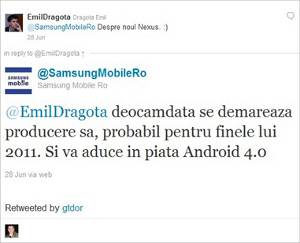A new LG handset has been spotted in Italy, which features a full QWERTY keypad with a touchscreen.
The phone, called as LG Optimus Pro C660, is the first such smartphone from the company, and seems to be aimed at business users as well as heavy Messaging types.
The specifications of the phone include 2.8-inch screen, 1500mAh battery (which is good thing and should give good backup), Android 2.3 Gingerbread, 3 megapixel camera, WiFi, Bluetooth and GPS.
An Italian website (androidworld.it) has reported that the phone is selling in some shops in the country at around 169 Euros (Rs12,500) – this price is attractive but we expect it to be lower when it comes to India, probably in next couple of months.
LG has recently launched LG Optimus 2X and Optimus Black in the Indian market, where it has not been very successful. Though Optimus One was a reasonable success, lack of products in the smartphone category has been a major reason for the lackluster performance and LG would like to bolster its portfolio by introducing Optimus Pro sooner than later.



 The post reveals some very shocking information about the upcoming Google Nexus device too. As mentioned in the post, Google Nexus 3 device will be manufactured by HTC. It is contrary to the earlier reports that the device will be manufactured by Samsung, who had also confirmed it on their Twitter page.
The post reveals some very shocking information about the upcoming Google Nexus device too. As mentioned in the post, Google Nexus 3 device will be manufactured by HTC. It is contrary to the earlier reports that the device will be manufactured by Samsung, who had also confirmed it on their Twitter page.